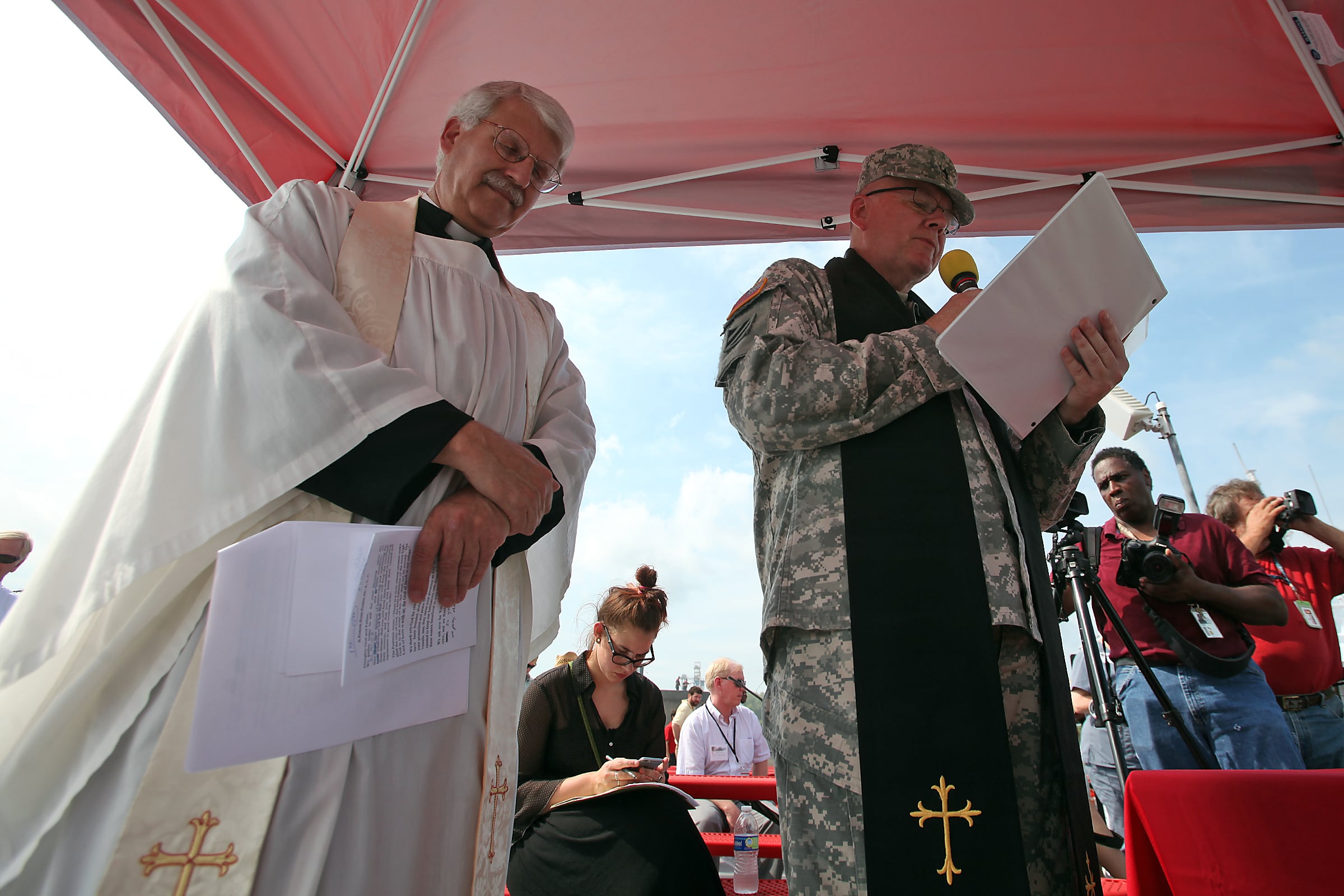On the same day that an MV-22B Osprey crashed off Okinawa, another Osprey's landing gear failed to work, forcing the aircraft to make an emergency landing on reinforced cushions at Marine Corps Air Station Futenma, officials said.
None of the four Marines aboard the Osprey were injured in the incident Tuesday. Members of its squadron are trying to determine why the landing gear failed to extend, officials said. The MV-22B was from Marine Medium Tiltrotor Squadron 262, 31st Marine Expeditionary Unit.
Also on Tuesday, another MV-22B from Marine Medium Tiltrotor Squadron 265 crashed after its rotor struck a refueling line. Two Marines were injured.
The Osprey from VMM-262 was conducting routine training at the time and was dispatched to make sure the crew of the other MV-22 was OK until rescuers arrived, said Capt. Jennifer Giles, a spokeswoman with the 31st MEU.
On the return flight to Futenma, the crew of the Osprey from VMM-262 realized that its landing gear wasn't working, so the the pilot successfully landed the aircraft on padding, Giles said.
"It's a trouble-shooting procedure that they used and it worked as advertised," she told Marine Corps Times.
Since no damage to the aircraft has been reported so far, the incident is not considered a "mishap," which is the official term for accidents resulting in death, injuries or damage, said Marine Corps spokeswoman Capt. Sarah Burns.
All Osprey flights in Japan have been suspended pending a review of checklists and safety procedures, the commander of Marne Forces Japan said on Wednesday.
Lt. Gen. Lawrence Nicholson sought to reassure Okinawa residents concerned about whether the Osprey is safe following Tuesday's crash.
"I regret that this incident took place," said Nicholson, who is also commander of III Marine Expeditionary Force. "We are thankful for all the thoughts and prayers the people of Okinawa gave to our injured crew."
As of Oct. 31, MV-22B pilots were flying an average of 13.2 hours per month out of a requirement for 16.4 flight hours per month, Burns said.
Despite its safety record, Okinawans have long viewed the Osprey as "the world's most dangerous aircraft," said Jeffrey Hornung, a Japanese security expert.
Tuesday's crash marks the first major Osprey accident in Japan since the aircraft were deployed to the country in 2012, said Hornung, with Sasakawa Peace Foundation USA, a think tank that analyzes the U.S. relationship with Japan.
"U.S. officials have said that the pilot originally wanted to bring it down at Futenma," Hornung said at a media roundtable on Thursday.
"Because [the town of] Ginowan has grown up around Futenma, there was always a worry that a crash could kill people. This sort of sparked this fear again of the dangers of Futenma."
However, opposition to the Osprey has also been used by Okinawans who want all U.S. military personnel to leave the island, Hornung said.
"I was down in Okinawa about two years ago," he said. "I was given a sign by the Kadena mayor's office. On one side of the sign it said 'No Osprey.' On the other side of the sign, it said … 'Opposition to the bases.'"
Separate from the incidents on Okinawa, an MV-22B Osprey from Marine Medium Tiltrotor Squadron 166 made an unplanned landing on Dec. 1 about 30 miles east of Marine Corps Air Station Miramar, California, after the aircraft's instrument panel showed a " potential maintenance issue," said Capt Kurt Stahl, a spokesman for 3rd Marine Aircraft Wing.
None of the Marines aboard were injured and the aircraft was not damaged, Stahl said. The Osprey returned to base on Dec. 3.





